John Hurrell – 26 April, 2024
Both types of black/white painting seem based on ad hoc improvisation. They have an alluring looseness in their treatment of space, and avoid formal balancing or rigidly orthodox clichéd composition. The non-organic spatial ones are quite contemplative, being less narrative, more perceptual, and freer of associations than the cellular works. More akin to say Robert Irwin, being more bodily in the experiential sense.
Here at Sumer, within this presentation of five b/w canvas paintings by Australian artist Stephen Bram, there are both cellular and pointillist images, one dwelling on immersive bloodlike liquid with corpuscles or penetrated microscopic body tissue; the other in air, or amongst architectural planes that seem on the verge of forming modular grids.
Creepy carcinogenic associations are present in the first, whilst in the second, the clusters of roughly painted black daubs also suggest bacteria in a Petrie dish. When flipped from horizontal to vertical, the dish becomes a series of overlapping floating rectangular curtains of shimmering dots hovering in uneven densities.
Both types seem based on ad hoc improvisation. They have an alluring looseness in their treatment of space, and avoid formal balancing or rigidly orthodox clichéd composition. The non-organic spatial ones are quite contemplative, being less narrative, more perceptual, and freer of associations than the cellular works. More akin to say Robert Irwin, being more bodily in the experiential sense.
Bram has a group project in the front window that is full of surprises—and very different. It involves three painters working together on one coloured canvas, where he and two school friends (‘non-artists’) started the work in 1981, leaving it only to complete it much later in 2008.
An unusually surreal painting with very puzzling raw Dali-like imagery, it depicts two emaciated hairless women, one with a skull head wearing a bishop’s mitre and the other an inverted vaguely foetal figure (with three legs and a tail) holding a layered table. Both are gyrating in a cave that has holes in its rock walls (we see an asteroid through one) that oddly are dissolving into a morass of blue foaming waves.
This very strange collaborative work is somewhat nightmarish. It has similarities with the less weird figurative (more expressionistic) painting of the English artist Ken Kiff which is full of Jungian symbolism, yet it has a compelling appeal. It doesn’t seem dated, for its bizarreness makes it unforgettable. Too bad there aren’t more of them.
John Hurrell
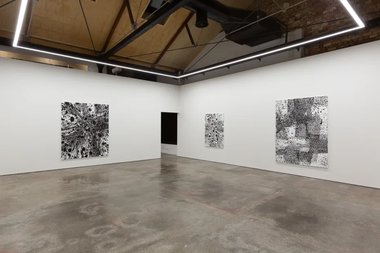
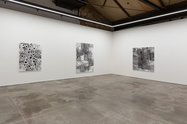
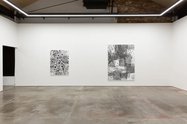
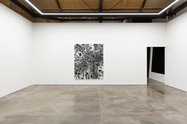
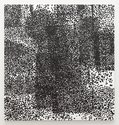


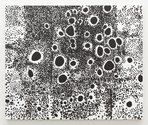
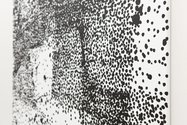
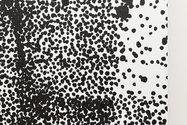
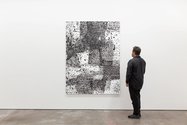
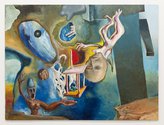
 Advertising in this column
Advertising in this column Two Rooms presents a program of residencies and projects
Two Rooms presents a program of residencies and projects



This Discussion has 0 comments.
Comment
Participate
Register to Participate.
Sign in
Sign in to an existing account.